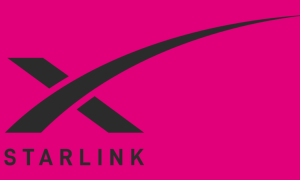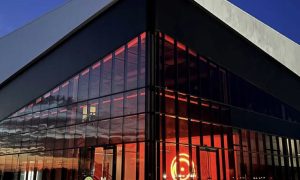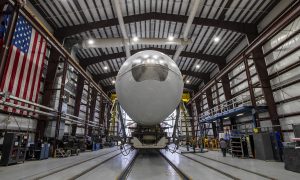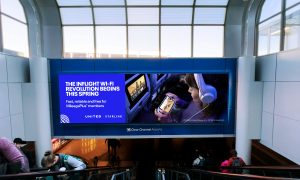News
Why does SpaceX market space better than NASA?
NASA may be truly making progress, but when compared to SpaceX, it seems more like thus far, they just have a guitar amp that “goes to 11”.
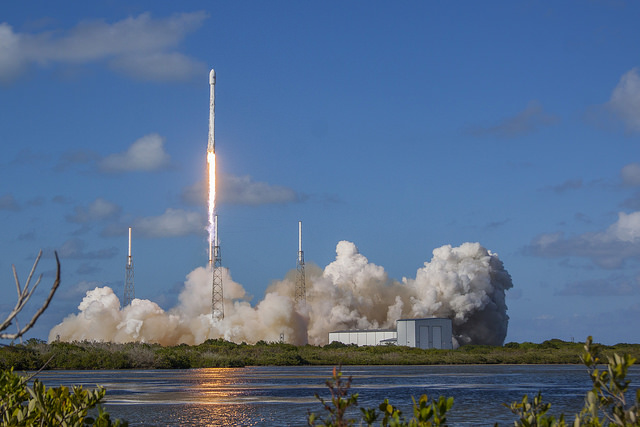
Unless you live under a rock (where exactly are these rocks, anyhow?), you’ve heard the news that SpaceX completed the 4th successful first stage landing of its Falcon 9 rocket after launching to a very high orbit. This was the third one in a row to land on an oceangoing droneship, setting the event up for a pathway to becoming routine business.
Waiting for Falcon 9 at the Park
I was in Florida last week and had the opportunity to go to Jetty Park in Cape Canaveral to watch the launch on its first scheduled date of Thursday, May 26th.
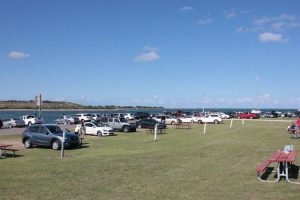
Unfortunately, I had to catch a flight before the next launch window opened after the first one was scrubbed, and I ended up catching the live stream from home on Friday; however, I still don’t regret having rearranged my flights to be there Thursday. Seeing the enthusiasm for the launch first-hand isn’t something I could have fully appreciated from a webcast.
Cars were piled in all over the park by the time the original launch time arrived. People were under sun shades, having picnics, and there were even a few tailgaters – an awesome concept in itself. The only damper is the inability to guarantee the launch will actually happen as scheduled, but since when has that impeded a viable tailgating excuse?
I’m not sure whether this type of activity happens for all launches, but it made me think about some of the discussions and my observations from earlier in the week.
SpaceX at the Space Congress
I also attended the first day’s events for the 44th Space Congress wherein commercial space technology was the primary topic. Bob Cabana, former space shuttle astronaut and current director of the John F. Kennedy Space Center, was the keynote speaker to kick off the event.
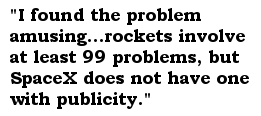 While taking questions, an audience member mentioned that her neighbor thought NASA had been “shut down”, and more audience members concurred that they’d had similar discussions with others. The purpose of the question was to gather Cabana’s opinion on why people weren’t more aware of NASA’s activities, but he didn’t entirely have an answer. I later overheard him speaking to someone else about how they were doing so many “great things” and didn’t understand why people weren’t more aware of them. As a SpaceX enthusiast, of course, I found the problem amusing. I mean, rockets involve at least 99 problems, but SpaceX does not have one with publicity. [Sorry, I had to.]
While taking questions, an audience member mentioned that her neighbor thought NASA had been “shut down”, and more audience members concurred that they’d had similar discussions with others. The purpose of the question was to gather Cabana’s opinion on why people weren’t more aware of NASA’s activities, but he didn’t entirely have an answer. I later overheard him speaking to someone else about how they were doing so many “great things” and didn’t understand why people weren’t more aware of them. As a SpaceX enthusiast, of course, I found the problem amusing. I mean, rockets involve at least 99 problems, but SpaceX does not have one with publicity. [Sorry, I had to.]
However, I still questioned why SpaceX was having an awareness impact on space travel that NASA, in all its social media, outreach efforts, and resources couldn’t seem to mirror. Was it that the technology SpaceX was developing more reminiscent of Hollywood and science fiction? Was it all just better marketing overall? Better video music?
Cue the First Panel
After more questions and a short break, the panel on the progress being made in NASA’s Commercial Crew program began with guests Danom Buck from Boeing and Benji Reed from SpaceX.
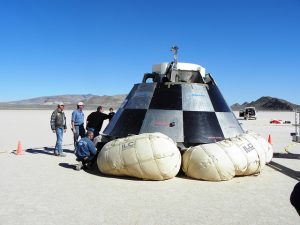
Boeing’s Commercial Crew capsule, CST-100 Starliner. Credit: BLM Nevada under CC by 2.0.
The Commercial Crew program involves the development of the next generation of transport technology for human space travel to and from the International Space Station (and eventually beyond). Or in other words, it’s the program to get America launching people from American soil again rather than buying rocket seats from the Russians.
The overall panel discussion was interesting, but I will admit that I kept waiting for Boeing to get to the “good” part. 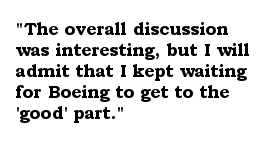 As a member of the general public, my interpretation of their technology was that it was a reworked version of the capsules used on the Apollo program and not much else. Their landing system consisted of high-speed-impact capable air bags versus SpaceX’s propulsive landing, i.e., “hovering”, Dragon capsule.
As a member of the general public, my interpretation of their technology was that it was a reworked version of the capsules used on the Apollo program and not much else. Their landing system consisted of high-speed-impact capable air bags versus SpaceX’s propulsive landing, i.e., “hovering”, Dragon capsule.
While I understand that there are significant improvements in the works with Boeing’s craft, I know I’m not the only one to be unmoved by the lack of apparent novelty in the landing system, particularly because I had recently seen this video of Elon Musk responding to an MIT student’s question comparing SpaceX’s system to Boeing’s:
https://youtu.be/PULkWGHeIQQ?t=48m7s
I kept waiting for the right question to break down the professionalism between the two company representatives (“Fight! Fight! Fight!”), but alas, nothing of the sort happened. I wasn’t entirely convinced that Danum was very excited about Boeing’s technology, either. Maybe I wasn’t being fair to Boeing. After all, Benji’s presentation began with this familiar SpaceX recap video:
Crossover Landing Technology Between Dragon and Falcon 9
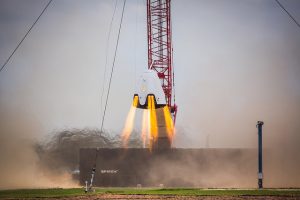
Credit: SpaceX
I did get a chance to ask Benji my own question wherein I inquired about how much technology crosses over between the Dragon capsule’s propulsive landing system and the Falcon 9’s first stage landing system. I was curious whether it was mostly just software sharing since landing the crafts were likely to use similar calculations, but the equipment involved was too different to be relatable.
His response consisted of an explanation about how the development environment at SpaceX is set up to encourage collaboration among systems engineers (open floor layout, connected teams next to one another). Implied answer: He either wasn’t sure specifically but assumed there was some crossover, or he knew some specifics, but wasn’t going to give them for one reason or another. Or perhaps it was some mix of the two.
Cue Lunch and the Next Panel
The speaker during lunch was Col. Eric Krystkowiak, the 45th Space Wing Launch Group Commander. The 45th Space Wing Launch Group is located at Patrick Air Force Base in Cape Canaveral, Florida where the May 27th Falcon 9 lifted off from. The first Falcon 9 ground landing also took place there, something Col. Krystkowiak spoke about during his presentation: “They’re thinking…still can’t believe the Air Force let us do that.”
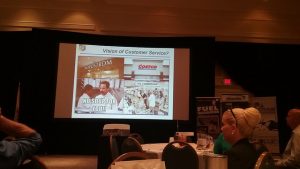
The Air Force’s customer service considerations.
As a lifelong Air Force brat, I may have been partial in my reception to the talk due to the familiar social gathering “zone” it reminded me of.
The presentation format and overall humor were very good (isn’t anything that quotes Seinfeld?), and although they have to remain impartial as government representatives, it certainly felt as though the Air Force genuinely liked the SpaceX team and was leaning towards their business model to support in their commercial spaceflight customer service role moving forward. Perhaps they just appreciate SpaceX’s wherewithal and determination to push through bureaucracy to really enable innovation.
Oh, and I think someone asked about the lawsuit SpaceX filed against the Air Force, but I don’t remember the specifics of either the question or the answer. Hey, it was lunch time!
The Journey Ends
Jumping forward again to the original Thursday launch date, once it was clear the launch was not happening before my flight home (shout out to the very nice lady listening to the AM radio updates), I had to book it to the airport. Then, ironically, it turned out my Uber driver had spent seventeen years as a defense contractor with Raytheon working on satellite technologies.
It really was a space kind of week!
Space geek that I am, I took the opportunity to have him provide first hand insight into what that type of job was like. I was particularly interested in why contract work like that always went over time and over budget. His answer was that essentially, when NASA approaches its contractors, they are asking for things to be done that have never been done before, thus it’s hard to predict exactly what the future will hold as far as the development of the technology.
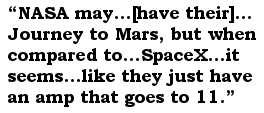 Fair enough, but once again, SpaceX shines here. There’s never been a company quite like them before, doing quite the things they’re doing in quite the way they’re doing them.
Fair enough, but once again, SpaceX shines here. There’s never been a company quite like them before, doing quite the things they’re doing in quite the way they’re doing them.
Maybe just being first has its merits? After all, history tends to reward the winners. Most Americans don’t know who the first American in space was, but they know the Russians beat us there to begin with, and they know we beat everyone to the Moon. Then again, Sally Ride tends to be mistaken by Americans as the first woman in space, but Russian Valentina Tereshkova was actually first.
The question of what makes SpaceX so different in marketing space technology is still a difficult one for me as my personal reasons for admiring their progress has little to do with the aesthetics of the achievements. I admire the true progress they’re making and the relatability of what they’re developing to what their larger goals are.
NASA may be truly making progress towards a “Journey to Mars”, but when compared to the advancements SpaceX has achieved, it seems more like thus far, they just have a guitar amp that “goes to 11”.
Thoughts, anyone?
Author’s Note: I’ve uploaded more pics of the Space Congress and the park on launch day to my Flickr account. Nothing spectacular – just FYI.
News
Tesla counters Saudi Arabia charging concerns with quick response
Tesla launched 24 new Superchargers in Saudi Arabia just one day after concerns arose regarding charging availability.
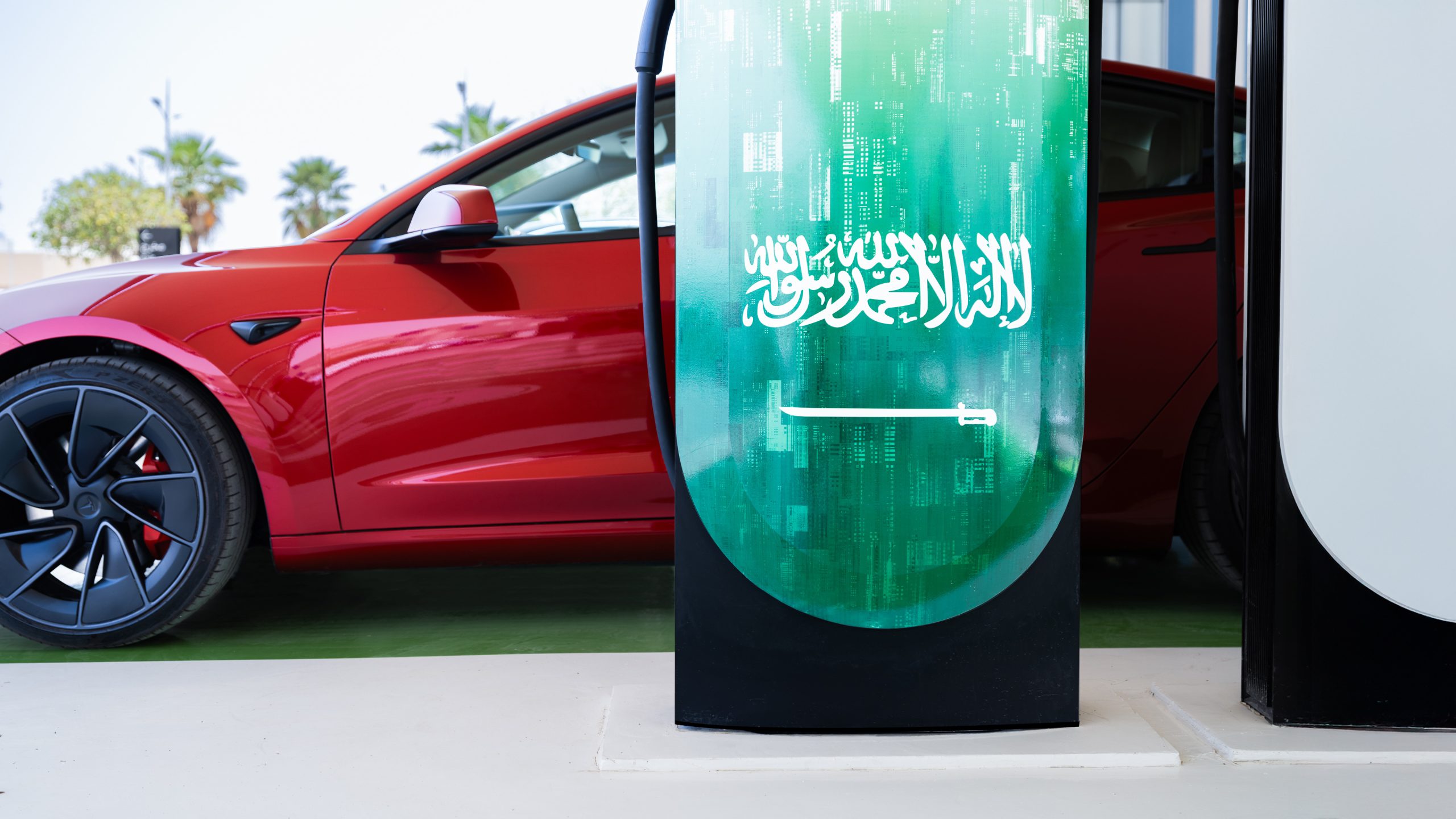
Tesla has countered concerns regarding the availability of electric vehicle chargers in Saudi Arabia with a quick response as it launched 24 Superchargers in the country’s most populated cities just one day after launching deliveries in the country.
Tesla announced that it was launching deliveries of the Cybertruck in Saudi Arabia, Qatar, and the United Arab Emirates on Thursday.
However, there were grave concerns about the availability of EV charging in the region, as Tesla had not built any Superchargers in Saudi Arabia, and there were only a small number built to begin with by other companies.
Tesla confirms Cybertruck will make its way out of North America this year
A report from Reuters earlier this week highlighted those challenges and concerns surrounding EV charging:
“As of 2024, Saudi Arabia had just 101 EV charging stations, compared with 261 in neighbouring United Arab Emirates, a country with a third the population, data from Statista based on Electromaps showed.
Most are in major cities, making long journeys across desert highways unfeasible.
‘I think charging is probably one of the main, if not the main, point of concern,’ said Carlos Montenegro, BYD’s general manager in Saudi Arabia, adding Saudi drivers clock up many more kilometres each year than in other markets.”
However, Tesla quickly responded by announcing the construction of 24 new Superchargers in Saudi Arabia:
🚨 Tesla has answered concerns about charging with its first Superchargers in Saudi Arabia!
24 total stalls is a great start! https://t.co/stQ5Q16GZK pic.twitter.com/rqTfjrivW3
— TESLARATI (@Teslarati) April 11, 2025
The chargers are installed in eights – Eight in Riyadh, eight in Jeddah, and eight in Dammam. However, these are not the only charging piles that Tesla plans to build in the Kingdom. It also announced plans to establish more in those three cities later this year, additional builds in the cities of Taif, Medina, and Buraydah next year, and the development of the Jeddah-Riyadh-Dammam highway.
This was a quick answer for the skeptics who were worried about charging, which was a valid concern. Tesla will continue to expand its Supercharger presence in the Middle East as it begins to deliver more vehicles. For now, this small rollout is a great start.
News
Tesla released the Cybertruck RWD to make the AWD look like a deal
Cybertruck LR RWD is effectively a $69,990 pickup that does not have 120V and 240V power outlets on its bed or 120V outlets in the cabin.
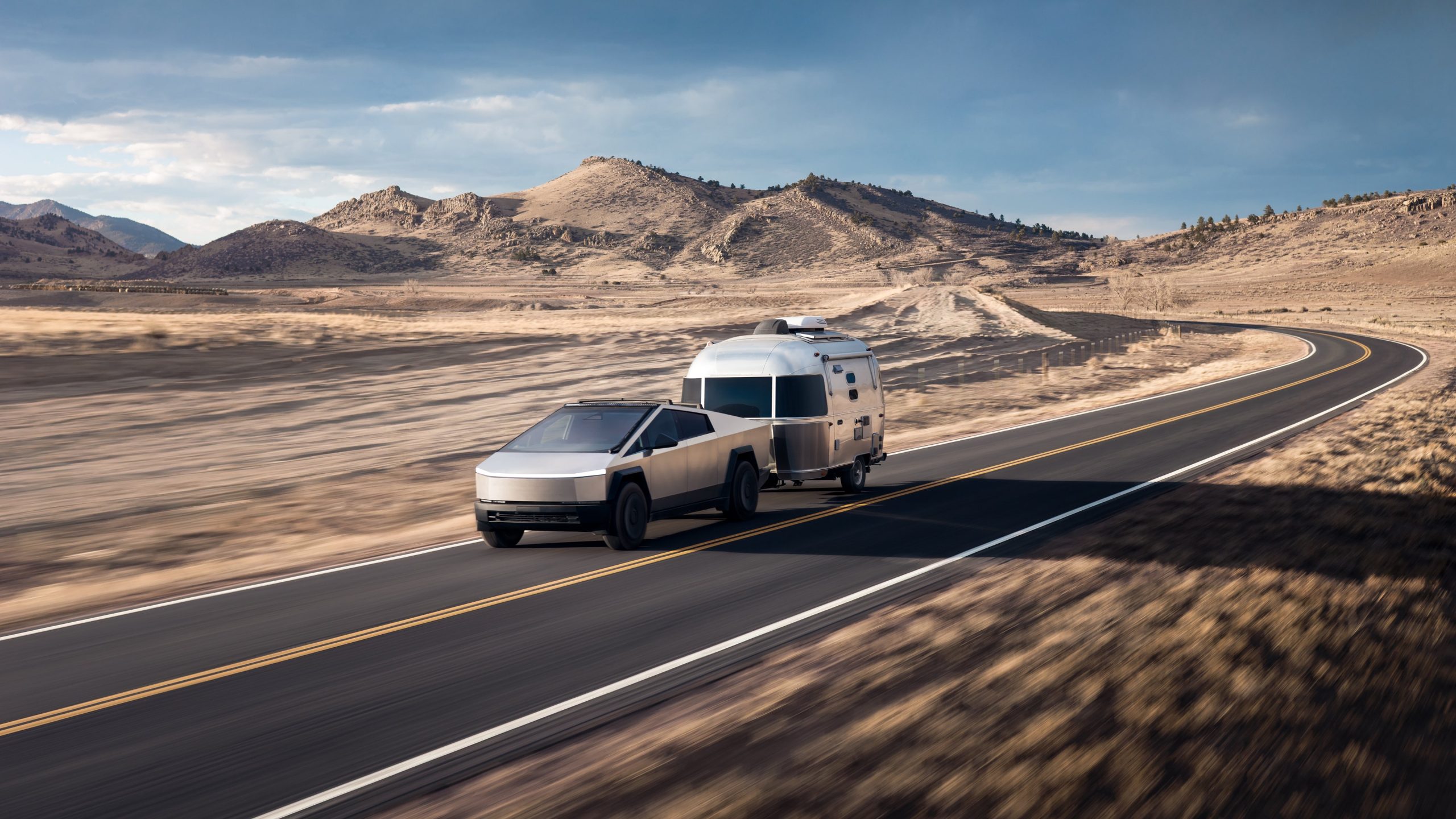
Tesla released the Cybertruck Long Range Rear Wheel Drive (LR RWD) recently, and it quickly received mixed reactions from the electric vehicle community. While the truck was praised for its long range, many argued that it was far too expensive due to the long list of features that it is missing compared to the Cybertruck All Wheel Drive (AWD), the mid-range variant of the all-electric pickup truck.
A look at the Cybertruck LR RWD’s pricing and features suggests that Tesla designed and priced the vehicle to push more buyers to opt for the Cybertruck AWD instead.
So Much Missing
The Cybertruck LR RWD costs $10,000 less than the Cybertruck AWD, but it is substantially less equipped compared to its mid-range counterpart. While the Cybertruck LR RWD’s slower 0-60 mph time, lower towing and payload capacity, textile seats, and fewer speakers are understandable, missing features such as the lack of air suspension, HEPA filter, and active noise cancellation make the vehicle truly a stripped down version of the all-electric pickup truck.
Considering that it is the most affordable Cybertruck available today, it would be fair to expect the vehicle to be geared for consumers who truly use their trucks for work. However, the Cybertruck LR RWD seems like a pretty expensive and under-equipped work truck, as it is effectively a $69,990 pickup that does not have 120V and 240V power outlets on its bed or 120V outlets in the cabin. It doesn’t even have otherwise basic Cybertruck features like the rear light bar, which is part of the pickup truck’s iconic, futuristic look.
Must Be Cheaper
The long list of missing features from the Cybertruck Long Range RWD has incited a lot of conversations among electric vehicle enthusiasts on social media, with some EV fans stating that the cost of the features that Tesla removed in the LR RWD seem to be worth far beyond $10,000. Others noted that with its (very) stripped-down nature, the Cybertruck Long Range Rear Wheel Drive should have been priced around $55,000, or at least closer to Elon Musk’s previous comments about electric pickup truck prices in the past.
Back in 2019, Elon Musk noted during an interview on the Ride the Lightning podcast that he believes consumers should be able to purchase a decent electric pickup truck for less than $50,000. “You should be able to buy a really great truck for $49k or less,” Musk stated then.
The Cybertruck was ultimately unveiled in November 2019 with a starting price of $39,990. If one were to adjust for inflation, Elon Musk’s sub-$50,000 Cybertruck price estimate would be worth $62,811 today, which is roughly the price of the Cybertruck LR RWD with the federal tax credit. For context, the Cybertruck’s $39,990 base price during its November 2019 unveiling is worth $50,249 today if adjusted for inflation.
A Boost to Cybertruck AWD
One would not be faulted to speculate that Tesla released the Cybertruck Long Range Rear Wheel Drive as a way to encourage customers to purchase the more expensive Cybertruck All Wheel Drive. For just $10,000 more, after all, customers would be getting a substantially better-equipped vehicle with better performance and far more utility.
It remains to be seen how well the Cybertruck LR RWD would sell, though considering its stripped-down nature, there seems to be a chance that the variant would follow the same path as the $35,000 base Model 3 Standard Range RWD, which was briefly sold but eventually retired due to low orders. What the $35,000 Model 3 did, however, was push a lot of sales of the Model 3 Standard Range Plus, which ultimately became one of Tesla’s volume sellers and is still in production today simply as the Model 3 RWD.
News
RBC cuts Rivian price target to $10 ahead of earnings report
Rivian hit 8.6K deliveries in Q1 2025 and reaffirmed targets. RBC cut its price target, all eyes are on May 6 for Rivian’s earnings call.
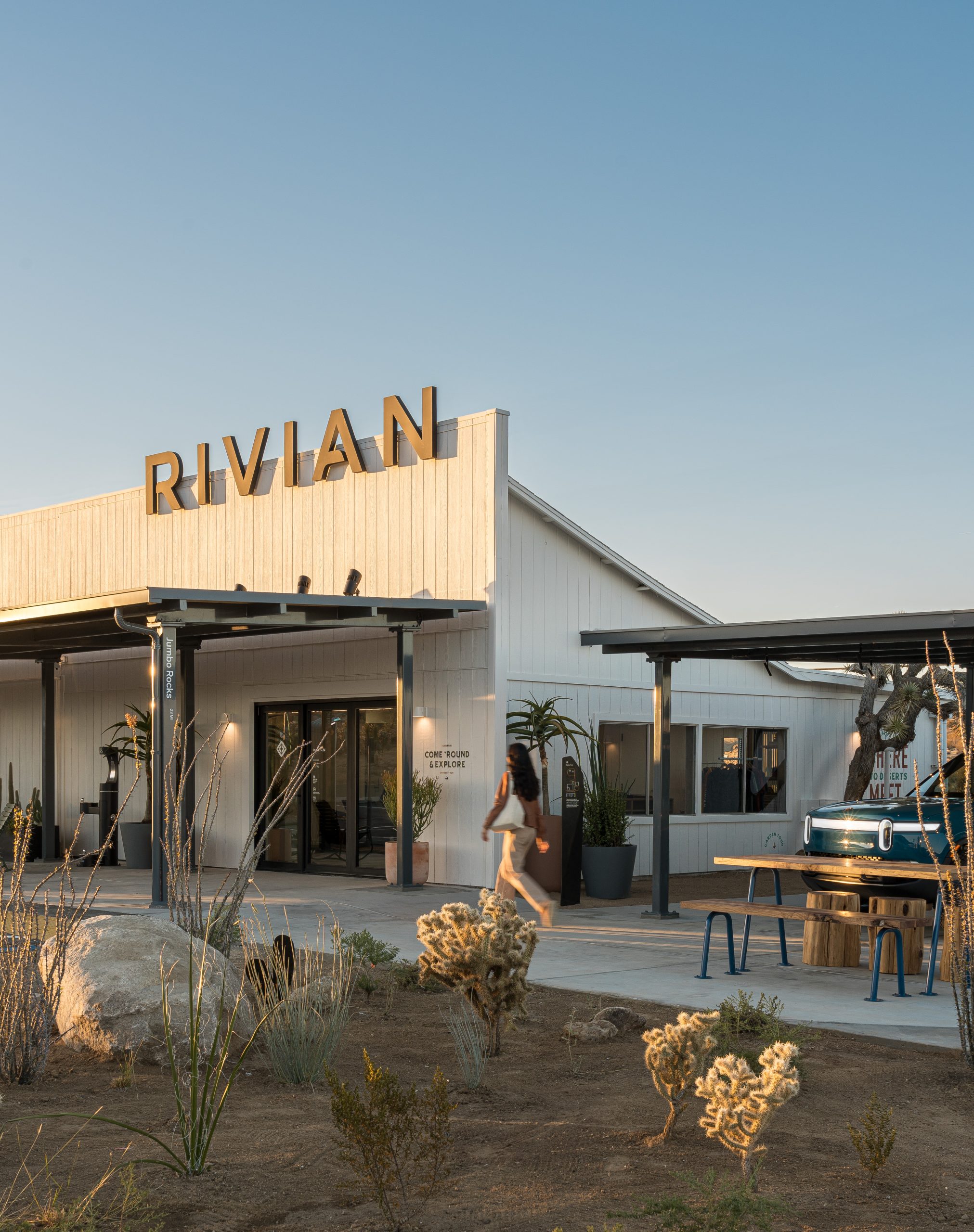
RBC Capital cut its Rivian price target to $10 ahead of the automaker’s Q1 earnings report.
RBC Capital dropped its price target for Rivian Automotive from $12 to $10 per share, sticking with a “Sector Perform” rating as it braces for the automaker’s first-quarter earnings. The firm’s new Rivian price target includes predictions for a March sales bump tied to looming tariffs, though RBC cautions that earnings may not fully reflect trade impacts.
Rivian produced 14,611 vehicles and delivered 8,640 in Q1 2025 at its Normal, Illinois plant. The company held steady on its full-year outlook, reaffirming its 2025 delivery guidance of 46,000 to 51,000. Rivian will release its first-quarter 2025 financial results on May 6 after market close.
RBC sees guidance shifts looming across the auto sector, possibly cutting estimates despite already lean consensus targets. It favors OEMs over suppliers amid macro jitters. The firm suggests tariff-free optimists could score big by betting on the “entire automotive group.”
According to GuruFocus, the average target price for Rivian is $14.54 with a high estimate of $23.00 and a low estimate of $6.10. Based on consensus recommendations from 31 brokerage firms, Rivian has a Hold rating on average.
The shadow of tariffs looms over the auto market, yet Rivian’s output holds firm against peers like Lucid, which face similar headwinds. RBC notes, “guidance in the auto sector could experience alterations,” signaling volatility ahead. Rivian’s Q1 haul—while solid—won’t fully decode trade effects, leaving investors eyeing May’s update for clarity on its EV trajectory.
-
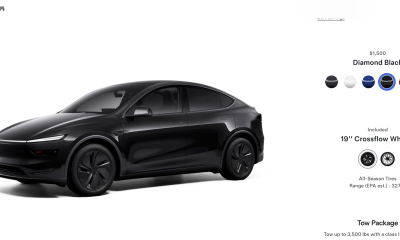
 News1 week ago
News1 week agoTesla rolls out new, more affordable trim of the Model Y Juniper in U.S.
-
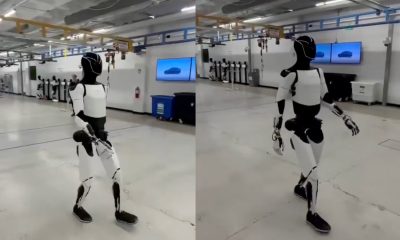
 News1 week ago
News1 week agoTesla shares Optimus’ improved walk in new update video
-

 News2 weeks ago
News2 weeks agoTesla US Gigafactories shields from Trump’s 25% Tariffs
-
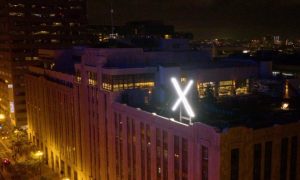
 Elon Musk2 weeks ago
Elon Musk2 weeks agoMusk says xAI has acquired X in $33 billion stock deal
-

 Elon Musk1 week ago
Elon Musk1 week agoTesla Germany reports 4,935 units sold in Q1 2025
-
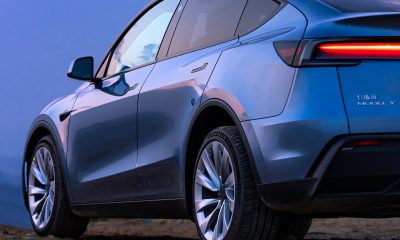
 Investor's Corner2 weeks ago
Investor's Corner2 weeks agoTesla (TSLA) shares company-compiled Q1 2025 delivery consensus
-
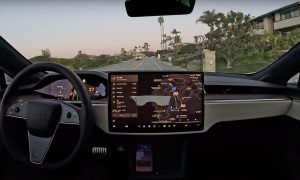
 News1 week ago
News1 week agoTesla expands Early Access Program (EAP) for early Full Self-Driving testing
-

 Elon Musk1 week ago
Elon Musk1 week agoNYC Comptroller moves to sue Tesla for securities violations

